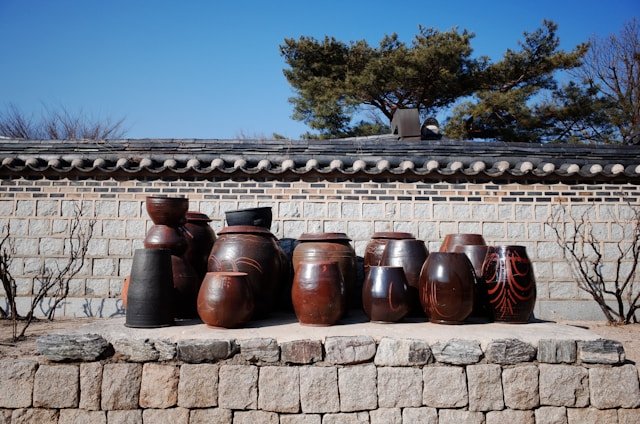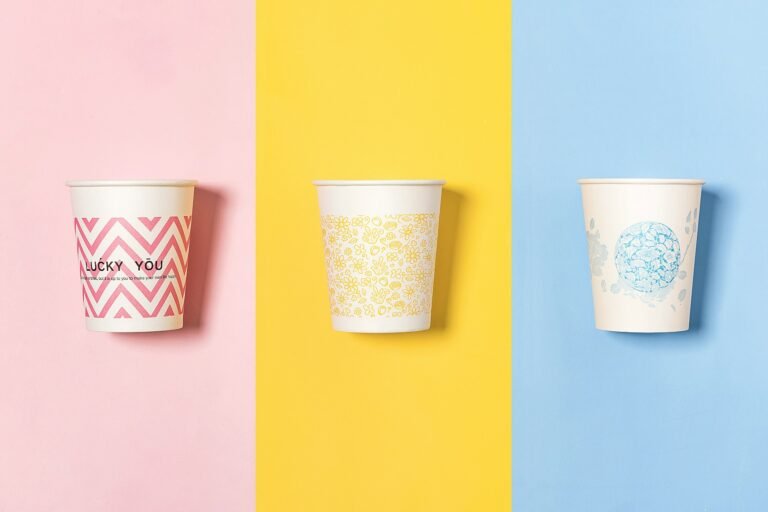
Transforming your outdoor space into a serene and stylish retreat begins with the right design elements—and oriental garden pots are a timeless choice that brings both beauty and cultural depth to any garden. These pots, inspired by traditional Asian artistry, feature elegant shapes, intricate patterns, and natural materials that seamlessly blend into both modern and classic landscapes. Whether you’re creating a tranquil Zen corner, enhancing a patio, or adding a bold statement piece among your flowers, oriental garden pots offer endless styling possibilities.
In this guide, we’ll explore how to choose, place, and maintain oriental garden pots to elevate your garden’s aesthetic appeal. With expert tips and practical advice, you’ll learn how to highlight these pots as focal points, harmonize them with your existing plants and décor, and make the most of their unique charm. Let’s dive into the art of garden styling with oriental flair.
What Are Oriental Garden Pots?
Oriental garden pots are decorative containers traditionally inspired by East Asian art and culture, particularly from regions like China, Japan, and Korea. These pots are often crafted from high-quality materials such as glazed ceramic, terracotta, or porcelain and are known for their intricate designs, including motifs like dragons, lotus flowers, cherry blossoms, and traditional calligraphy. Their beauty and cultural richness make them a popular choice for enhancing outdoor spaces with an elegant, timeless feel.
From an expert standpoint, oriental garden pots not only serve as eye-catching planters but also reflect centuries-old craftsmanship and design philosophy rooted in balance, harmony, and nature. Many gardeners and landscape designers use these pots to add structure, style, and authenticity to themed gardens such as Zen gardens, Chinese courtyards, or fusion-style patios.
According to experienced horticulturists and garden decorators, these pots are ideal for showcasing bonsai trees, bamboo, orchids, or flowering shrubs. Their varied shapes and sizes also provide versatility for both small balconies and large garden landscapes.
By choosing authentic oriental garden pots, homeowners can incorporate cultural storytelling into their gardens while ensuring durability and aesthetic appeal—an approach that reflects both expert design sensibility and a deep appreciation for traditional art forms.
Choosing the Right Oriental Garden Pots for Your Space
Selecting the right oriental garden pots requires more than just picking a beautiful design—it involves understanding your garden’s needs, layout, and the characteristics of the plants you wish to grow. According to experienced garden designers and horticulturists, a well-chosen oriental pot enhances not only plant health but also the visual harmony of your outdoor space.
First, consider the size and scale. Larger oriental pots are ideal for statement trees like bonsai or dwarf citrus, while smaller ones work well for herbs, ferns, or ornamental grasses. Always match the pot size to the plant’s root system to ensure healthy growth.
Material is also essential. Glazed ceramic or porcelain pots, common in oriental styles, are elegant and weather-resistant. However, ensure they have proper drainage holes to prevent root rot. If your climate experiences frost, choose frost-proof options or bring delicate pots indoors during winter.
Design and color should complement your garden’s theme. For example, blue-and-white porcelain suits Zen or water-themed gardens, while earthy terracotta pairs well with tropical or rustic settings.
Most importantly, choose authentic and durable oriental garden pots from reputable sources. This ensures quality, longevity, and a genuine cultural touch, aligning with trusted expert recommendations and garden aesthetics.
Styling Tips from Garden Design Experts
Using oriental garden pots effectively in your garden is both an art and a science. Expert garden designers emphasize the importance of balance, harmony, and intentional placement when incorporating these culturally rich pieces. Below are professional tips to help you style your garden beautifully using oriental garden pots:
Create Visual Harmony with Grouping
- Use odd numbers: Group pots in threes or fives to create a natural, flowing arrangement.
- Vary heights and widths: Combine tall, medium, and small pots to add dimension and depth.
- Stick to a color palette: Select pots that share tones or patterns to unify the look.
Highlight Focal Points
- Place a large, ornate oriental pot as a centerpiece at entryways or near seating areas.
- Use unique designs like dragon or lotus motifs to draw attention and tell a story.
Complement Surrounding Elements
- Pair pots with stone pathways, wooden benches, or bamboo fencing for a cohesive Asian-inspired garden.
- Add natural textures like river rocks or moss to enhance the tranquil feel.
Choose Plants That Match the Pot’s Theme
- Bonsai, bamboo, azaleas, or orchids work well in oriental garden pots.
- Select plants that echo the pot’s formality, color, and cultural aesthetic.
Style with the Seasons
- Rotate seasonal plants for year-round beauty.
- Use spring flowers, summer herbs, autumn foliage, and winter evergreens to keep the pots vibrant.
Avoid Common Styling Mistakes
- Don’t overcrowd pots; let each stand out on its own or as part of a thoughtful group.
- Avoid placing too many colors or patterns together, which can create visual clutter.
Maintenance Tips for Oriental Garden Pots
Maintaining oriental garden pots properly ensures their beauty, functionality, and longevity. Garden experts and horticulturists emphasize that these decorative pots, often made from ceramic, porcelain, or terracotta, require specific care to withstand outdoor conditions and support healthy plant growth.
Here are trusted maintenance tips based on professional experience:
Clean Regularly
- Wash oriental garden pots with mild soap and warm water to remove dirt, algae, and mineral buildup.
- Avoid harsh chemicals that can damage delicate glazes or traditional painted designs.
Check for Proper Drainage
- Ensure drainage holes are clear to prevent waterlogging and root rot.
- Use pot feet or risers to elevate pots and improve water flow, especially on patios or decks.
Protect from Harsh Weather
- In cold climates, bring fragile ceramic or porcelain pots indoors during frost to prevent cracking.
- For terracotta pots, apply a sealant to reduce moisture absorption and freeze damage.
Handle with Care
- Always lift large pots from the base, not the rim, to avoid breakage.
- Use protective pads when placing pots on hard surfaces to prevent chipping.
Re-pot and Refresh Soil Periodically
- Change the soil every 1–2 years to maintain plant health and prevent compaction.
- Inspect for cracks or wear when repotting and repair or replace damaged containers.
Where to Buy Authentic Oriental Garden Pots
Finding authentic oriental garden pots involves more than selecting visually appealing pieces—it requires sourcing from reputable sellers that value craftsmanship, cultural heritage, and quality materials. Garden designers and cultural experts emphasize the importance of choosing trusted suppliers to ensure that the pots you buy are both genuine and long-lasting.
Trusted Places to Buy Authentic Oriental Garden Pots:
- Specialty Garden Centers
Look for nurseries and garden centers that specialize in Asian or traditional garden decor. These businesses often collaborate with artisans or import directly from East Asia, ensuring authenticity. - Reputable Online Retailers
Websites like Wayfair, Houzz, and Gardener’s Supply Company often feature curated collections of oriental garden pots. Check for detailed product descriptions, customer reviews, and materials used to verify legitimacy. - Cultural Artisan Markets and Import Stores
Stores that focus on imported goods or Asian decor may offer handmade oriental pots from China, Japan, or Korea. Ask for details on origin, artist, and production methods. - Local Pottery Studios with Asian Design Influence
Some skilled potters create oriental-style garden pots using traditional glazing and shaping techniques. Buying directly from artisans ensures both quality and transparency.
What to Look For:
- High-quality ceramic, terracotta, or porcelain materials
- Hand-painted or carved designs (lotus, koi fish, dragons, etc.)
- Clear brand or artisan information and country of origin
- Functional features like drainage holes and UV-resistant glazes
Common Mistakes to Avoid When Styling with Oriental Garden Pots
Styling your garden with oriental garden pots can add timeless beauty and cultural depth—when done correctly. However, even the most elegant pots can lose their impact if not styled thoughtfully. Based on expert advice from professional garden designers and horticulturists, here are some common mistakes to avoid:
Overcrowding the Space
Placing too many pots in a small area can make the garden feel cluttered and disorganized.
Expert Tip: Allow each oriental pot to stand out by giving it space. Group them in odd numbers and vary their sizes for a natural flow.
Ignoring Proportions
Using pots that are too large or too small for the space or plant type can disrupt balance.
Expert Tip: Match pot size with plant maturity and garden scale. A large bonsai tree, for instance, needs a substantial, stable pot to anchor the design.
Mismatching Styles and Themes
Combining oriental pots with clashing modern or rustic décor can diminish their aesthetic.
Expert Tip: Blend oriental pots with harmonious elements like bamboo fencing, stone lanterns, or Asian-inspired water features.
Neglecting Drainage
Using pots without proper drainage can lead to waterlogged soil and unhealthy plants.
Expert Tip: Always choose pots with drainage holes or use pot inserts to protect both plant roots and pot longevity.
Overlooking Maintenance
Failing to clean, seal, or reposition your oriental garden pots can result in damage over time.
Expert Tip: Regularly inspect pots for cracks, clean off algae buildup, and protect them from extreme weather.
Styling your garden with oriental garden pots offers a unique opportunity to blend cultural elegance with natural beauty. By understanding their history, selecting the right pots, and applying expert styling and maintenance tips, you can create a harmonious outdoor space that reflects both tradition and personal taste. Avoiding common mistakes—such as overcrowding, poor drainage, and mismatched themes—ensures your garden remains balanced, healthy, and visually appealing. With careful attention and authentic pieces, oriental garden pots will not only enhance your garden’s aesthetic but also stand as lasting symbols of artistry and tranquility. Embrace these expert insights to transform your garden into a serene retreat filled with timeless charm.




